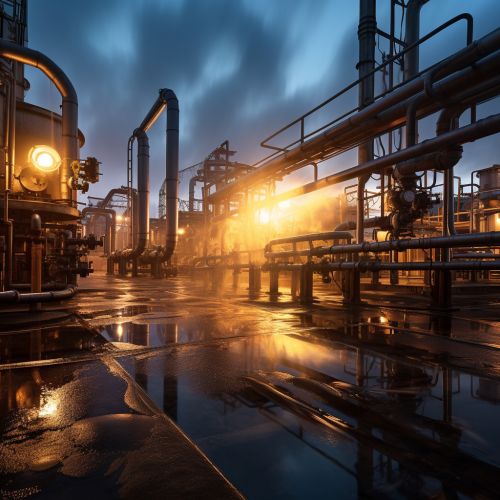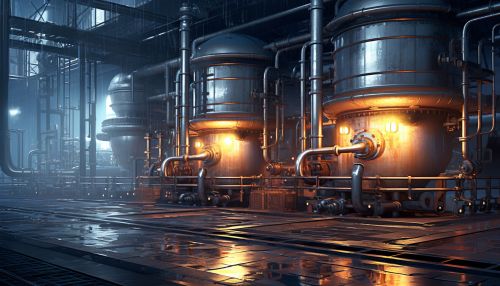Condensation
Introduction
Condensation is a fundamental process in the field of thermodynamics, specifically under the branch of phase transitions. It is the transformation of a substance from a gaseous state into a liquid state. This process is a result of a decrease in the temperature or an increase in the pressure of the gas.


Physical Description
Condensation occurs when a gas comes into contact with a cooler surface and loses its thermal energy, causing its molecules to slow down and come together to form a liquid. This is a direct result of the kinetic theory of gases, which states that the temperature of a gas is directly proportional to the average kinetic energy of its molecules. Therefore, when the temperature decreases, the kinetic energy of the gas molecules also decreases, causing them to move slower and come together to form a liquid.
Thermodynamic Perspective
From a thermodynamic perspective, condensation is an exothermic process, meaning it releases heat. This is because the gas molecules, when coming together to form a liquid, release the energy they had absorbed to become a gas in the first place. This energy is released in the form of heat, which can be measured using a calorimeter.


Role in the Water Cycle
Condensation plays a significant role in the water cycle, specifically in the formation of clouds. When warm, moist air rises, it cools and expands in the upper atmosphere. This causes the water vapor in the air to condense and form tiny water droplets, which come together to form clouds. This is why clouds are often seen at high altitudes where the air is cooler.
Industrial Applications
In industry, condensation is used in a variety of applications. For example, in distillation processes, a mixture of liquids is heated to create vapor. This vapor is then cooled to condense it back into a liquid, allowing the different components of the mixture to be separated based on their different boiling points.


